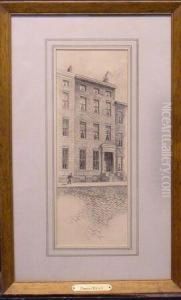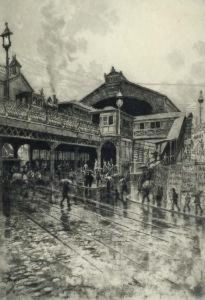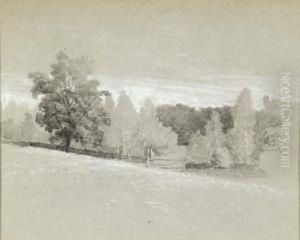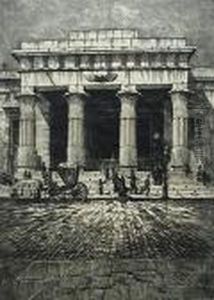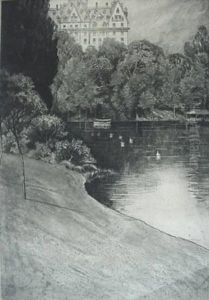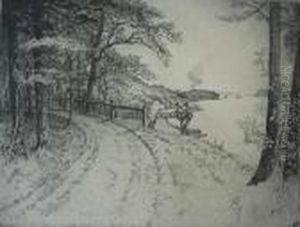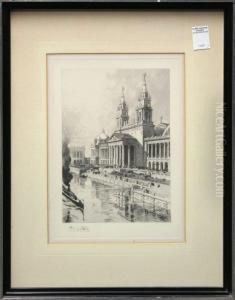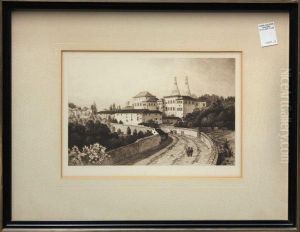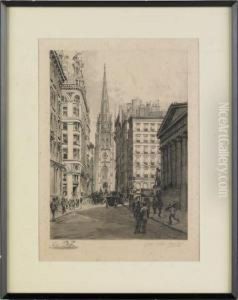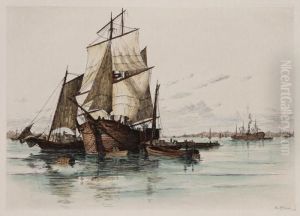Charles F. Mielatz Paintings
Charles Frederick William Mielatz, known as Charles F. Mielatz, was a German-American artist celebrated for his etchings and printmaking. Born in Breddin, Germany, on September 24, 1864, Mielatz developed an interest in the arts at a young age. He immigrated to the United States in his youth and became a naturalized citizen, embracing the vibrant cultural scene of his adopted country.
Mielatz studied art at the National Academy of Design in New York and was greatly influenced by the works of James Abbott McNeill Whistler, whose style resonated in Mielatz's own etchings. He became a member of the New York Etching Club and later served as its president, which played a significant role in the revival of etching as an art form in America during the late 19th century.
Throughout his career, Mielatz focused on urban and industrial landscapes, often depicting the bustling streets of New York City with a particular interest in the changing architecture and the effects of modernization. His work is characterized by a meticulous attention to detail and a masterful handling of line and texture, which imbued his prints with a distinctive atmosphere.
In addition to his artistic pursuits, Mielatz was an influential teacher. He taught etching at the National Academy of Design for many years, sharing his knowledge and passion for printmaking with a new generation of artists. His legacy as an educator and artist is marked by the respect he earned among his peers and students.
Charles F. Mielatz's contributions to American art were cut short by his untimely death on February 19, 1919. Despite his relatively brief career, his etchings remain a testament to his skill and his unique perspective on the urban landscape. His works are held in the collections of several prestigious institutions, including the Metropolitan Museum of Art and the Library of Congress, ensuring that his artistic vision continues to be appreciated by future generations.
